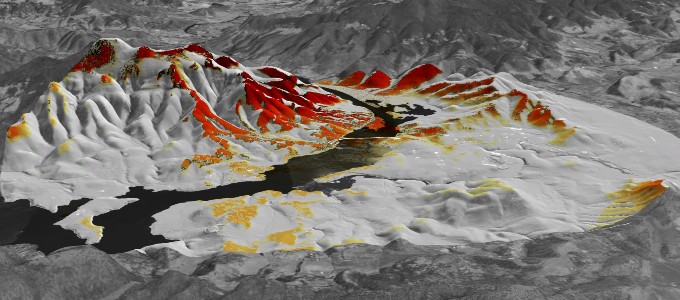Visibility analysis for the proposed new Bridgewater Bridge, Tasmania

Client: Inspiring Place, for the Department of State Growth
Location: Tasmania
Date: March 2021
Helping communicate potential visual impacts of new transport infrastructure
Background
The Bridgewater Bridge is an important part of Tasmania’s freight and transport links between the north and south of the state. The bridge is surrounded by residential areas experiencing significant population growth and increasing traffic congestion. To improve current and future traffic flow across the bridge more lanes are needed, requiring major upgrades and new bridge infrastructure. This significant project is being co-funded by the state and federal governments as part of the ‘Hobart City Deal’. It is the largest investment in a single transport infrastructure project in the state’s history.
With the new bridge infrastructure being taller and wider than the existing ones, it is essential to investigate the visual impact on the surrounding area. Members of the community want to understand how the bridge will look and whether it will obstruct their views of Hobart’s iconic kunanyi/Mount Wellington. Engineers utilise these results to understand the visual impact that their design has on the surrounding area and nearby stakeholders. These studies allow the design to be modified or optimised early on to minimise impacts on the visual surroundings.
Solution
Entura conducted a visibility impact assessment (VIA) to communicate the potential visual impacts of the new development on the surrounding areas.
First, we identified key observation points (OP) or areas of interest that locals would consider important and would want to understand the visibility of the larger bridge structure from that location.
We used LiDAR to generate a DTM (earth surface) and a DSM (terrain surface with vegetation). This allowed us to compare visibility results using both surfaces: (i) the real scenario in which vegetation exists and may obstruct the view from/to the new bridge infrastructure, and (ii) a worst-case scenario in which bare earth is used (no vegetation exists) to block the view.
Finally, we created an automated process that enabled us to run multiple analyses from different OPs and scenarios simultaneously, significantly reducing the processing time. Hence reducing time and costs to meet the client’s requirements.
Services provided
- Visual impact assessment
Outcome
Our results allowed consultants (Inspiring Place) to understand the overall impact that the new bridge infrastructure would have on the surrounding landscape and provide valuable input into their assessment of the project for their Landscape & Visual Analysis Report. Construction of the new bridge was completed in 2025.




